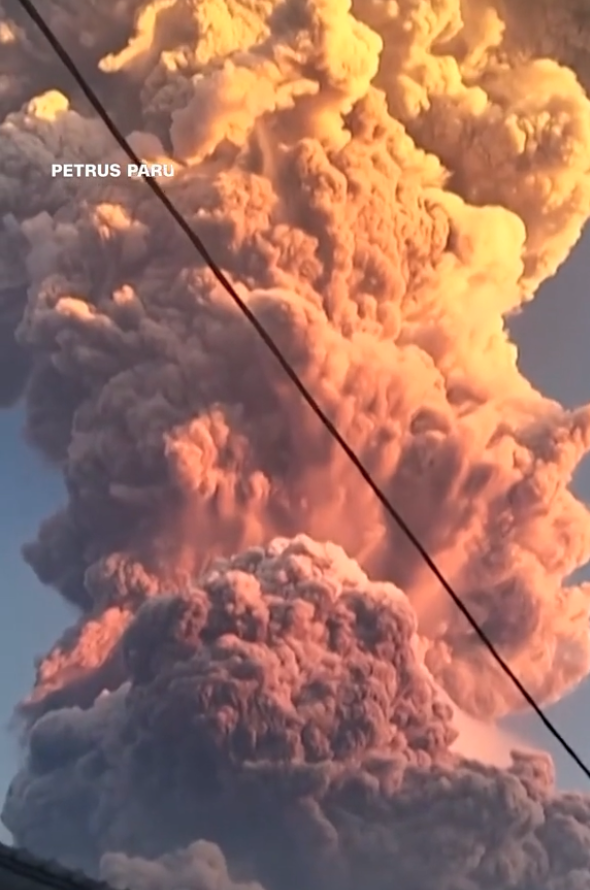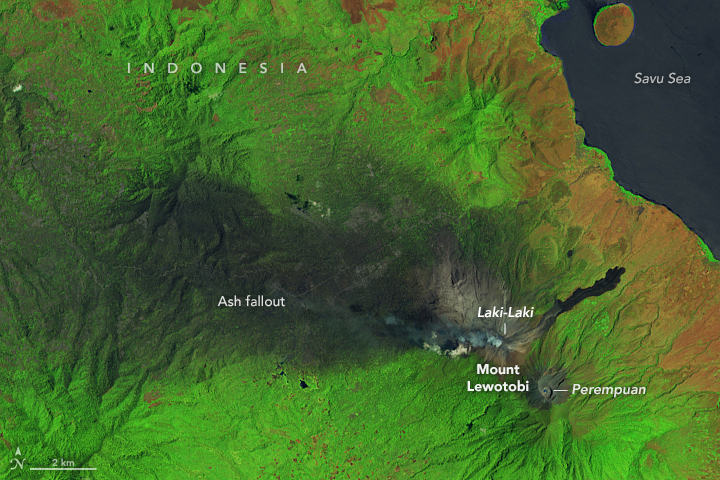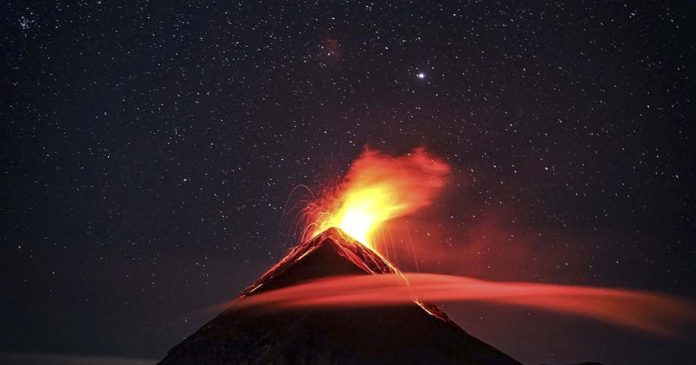
Ring of Fire Volcano Eruption Claims Latest Victims
Indonesia sits in the Ring of Fire, where giant tectonic plates crash together which causes frequent volcanic activity. This island nation hosts 120 active volcanoes scattered across its territory, home to 270 million people. Regular earthquake activity shakes the country due to its location along fault lines surrounding the Pacific Ocean. There are very few places on Earth that experience as much volcanic activity as Indonesia.
@cnn Mount Lewotobi Laki Laki, one of Indonesia’s most active volcanoes, erupted Tuesday, sending an ash cloud high into the air. The country’s volcanology agency has raised the alert level to the highest. #CNN #News #Indonesia #volcanoes ♬ original sound – CNN
Mount Lewotobi ranks among Indonesia’s most dangerous peaks. The local people call the twin peaks Laki-Laki and Perempuan, meaning “husband and wife” in Indonesian, a fitting description since the smaller, more active Laki-laki erupts frequently while its taller partner Perempuan has remained largely calm since the 1930s. Multiple eruptions struck the mountain throughout 2024, with November bringing the most devastating impact. Those November eruptions sent hot rock and debris racing 4 miles from the crater, killing nine people and injuring dozens more while forcing thousands from their homes. March and May had already brought earlier eruptions, each time forcing emergency agencies to raise alert levels to maximum severity.
Ash Cloud Triggers Pacific Tsunami Watch

Tuesday’s explosion came at 5:35 p.m. local time, sending a massive ash column over Flores Island. People could see the enormous orange mushroom cloud from cities 93 miles away as it spread across the skies. Muhammad Wafid, head of Indonesia’s Geology Agency, reported that 10,000 meters of thick grey clouds had burst from the mountain. The agency immediately raised the alert to maximum danger levels and expanded the evacuation zone to 5 miles around the crater.
The massive eruption from the volcano also triggered tsunami concerns across the Pacific. Big volcanic blasts can push ocean water and create dangerous waves, so Japan spent the night monitoring water level gauges throughout the region and neighboring countries, searching for any unusual patterns. Scientists tracked the data closely until dawn brought relief on Wednesday, June 18th, when Japan’s Meteorological Agency announced that “no noticeable changes in tidal levels had been recorded at observation points in or outside Japan.”
Thousands Stranded as Flights Cancel
The eruption grounded air travel across the region and airlines scrambled to cancel routes. Singapore Airlines canceled four routes to Bali while its budget arm Scoot pulled flights to nearby islands. Australian carriers Jetstar and Virgin Australia kept planes grounded, and AirAsia scrapped multiple Indonesian routes entirely. More than 37 flights were canceled at Bali’s main airport alone, leaving travelers stranded with empty departure boards.
Over 1,000 tourists found themselves stuck, particularly those hoping to reach Bali’s beaches or see Komodo dragons. One passenger described her shock to reporters when departure boards suddenly went blank. She and her husband scrambled to book extra accommodation, turning their vacation into an unexpected extended stay. Many families faced similar situations, missing connecting flights home to other countries and booking extra hotel nights.
The disruption extended far beyond airports. Australia’s aviation authorities slapped a red alert on the entire region while Indonesian officials closed three airports in the eastern provinces, including Maumere’s main hub. Villages emptied as residents fled the danger zone. Indonesia’s National Disaster Management Agency urged people to evacuate from the volcano’s eruption zone to safe locations while tremors continued shaking the ground.
Mount Lewotobi had been giving warnings. The mountain had been restless for weeks. Earthquake sensors recorded daily volcanic activity that jumped from the usual 8-10 events per day to 50 volcanic activities just two hours before the major eruption. Monitoring teams across Indonesia watched the data with growing concern. Officials told people to stay 4 miles away from the volcano. Villages handed out face masks to protect residents from ash.

The 5,197-foot peak had been stirring for nearly ten months. According to Indonesia’s volcanology agency, Lewotobi has erupted 427 times this year alone, making it one of the country’s most active volcanic peaks. This latest explosion was the most dramatic moment in a long period of geological unrest that has kept emergency agencies on constant alert. Scientists worried about what could come next. Heavy rains might trigger lahar floods. These are deadly rivers of mud and volcanic debris that race down mountainsides faster than people can run.
Flying Returns to Normal
As Mount Lewotobi’s volcano settled after its devastating eruption, the crisis that had paralyzed air travel across Southeast Asia began to ease as quickly as it had started. Within 48 hours, airport crews cleared ash from runways and reopened terminals, bringing relief to thousands of stranded passengers. By Thursday morning, Jetstar meteorologists confirmed that ash clouds were dissipating and conditions were improving.
Routes to Australia, Vietnam, Singapore, Malaysia, and China gradually resumed normal operations. Indonesia’s Transportation Ministry reported that 87 flights had been affected on Wednesday alone. Impacting over 14,000 passengers across 66 international and 21 domestic routes.
While major airports restored full service, smaller regional airports in eastern Indonesia remained cautious, keeping runways closed while teams monitored lingering ash particles. AirNav emphasized “ensuring the safety of the passengers” even as pressure mounted to restore normal schedules.
Mount Lewotobi continues to rumble with elevated seismic activity, keeping emergency agencies on high alert. Summer travel across Southeast Asia took a huge hit, though quick international cooperation helped minimize lasting economic damage. The episode highlighted how quickly volcanic threats in the Ring of Fire can affect multiple nations and the importance of coordinated disaster response.




